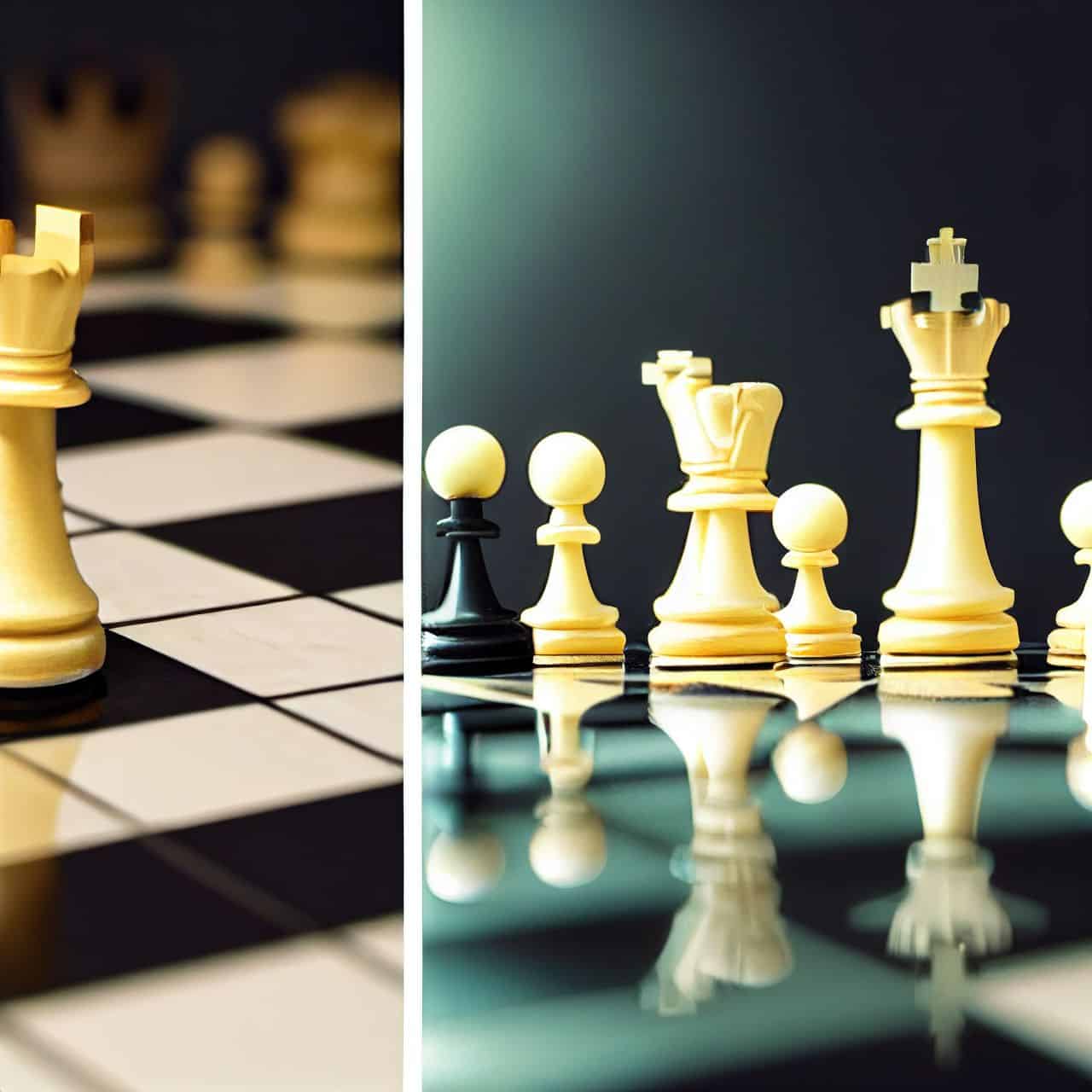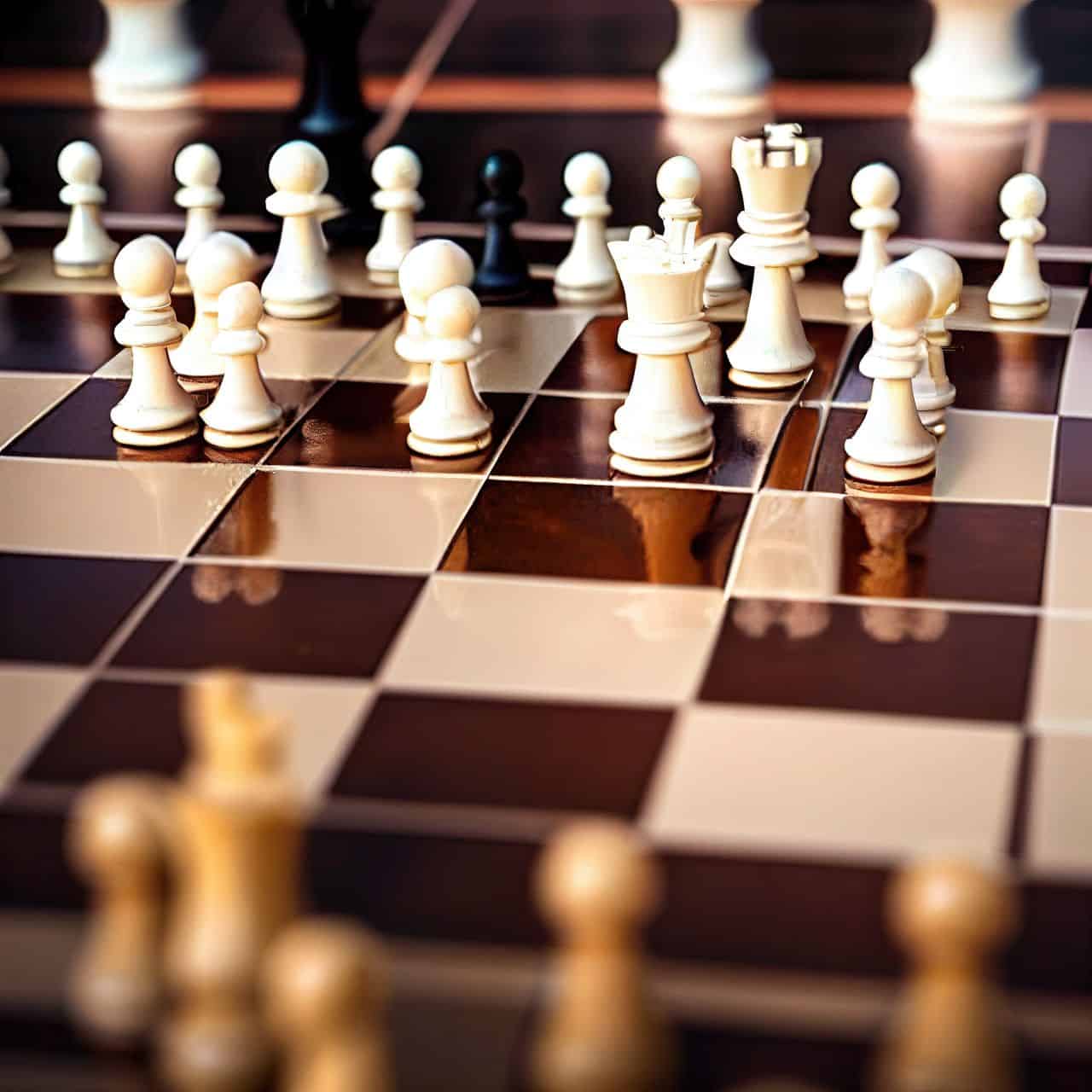The game of chess is so intriguing: its rich history, the different strategies involved, and the psychological elements at play. But one of the fascinating aspects of chess is its mathematics. This blog post will explore mathematical concepts that underlie this age-old board game. We will answer the question: how many squares are on a chessboard?
And we will see how this number can be used to solve other exciting problems.
The answer to the question “how many squares are on a chessboard?” is 64. This is because a chessboard comprises an eight-by-eight grid of squares. But this answer only scratches the surface of the mathematics involved in chess. Let’s take a closer look at some of the other mathematical concepts that come into play in this game.
Controlling the Territory of the Chessboard

One of the most important aspects of chess is the concept of control. In chess, players strive to control as much of the board as possible. One way to measure control is through something called “territory.” Territory can be considered the number of squares on the board a player can reach with their pieces. So, if we want to know who wins in a game of chess, one way to find out is to count up the territory controlled by each player.
But how do we calculate territory? It turns out that there is a formula for this. The formula is:
T = (S+B)/(S-B)
Where T is the territory, S is the number of squares controlled by the player, and B is the number of squares controlled by the opponent.
So, using this formula, we can see that if one player controls more squares than their opponent, they will have a higher territory. And the player with the most territory is usually the one who is winning the game.
Now that we’ve seen how to calculate the number of squares on a chessboard and how to use this information to measure control let’s look at some other interesting problems that can be solved with chessboard math.
Solving Problems With Chessboard Math

Do you know the world record for the longest chess game ever played? The match between Robert James Fischer and Boris Spassky lasted for 190 moves over 20 hours and 15 minutes! If we wanted to calculate how long this game would have been if it had been played at a faster pace, we could use the following formula:
T = (S+B)/(S-B)
Where T is the time, S is the number of squares on the chessboard, and B is the number of moves made in the game.
Plugging in the numbers from the Fischer-Spassky match, we get 21 hours and 33 minutes of game time. So, even if the game had been played faster, it would still have been a very long match!
This formula can also calculate the length of other chess games. For example, the shortest possible chess game is just two moves long. And the longest possible chess game is 288 moves long.
What Are the Types of Squares on a Chess Board?
There are two types of squares on a chessboard: black and white. The player who controls the most black squares is said to have “the initiative,” while the player who controls the most white squares is said to be “defending.”
The number of black and white squares can be used to calculate the territory controlled by each player. As we saw before, the formula for territory is:
T = (S+B)/(S-B)
Where T is the territory, S is the number of squares controlled by the player, and B is the number of squares controlled by the opponent.
A player who controls more black squares than their opponent has a higher territorial advantage. The player with the most territory is usually the winner of the game.
This formula can also be used to calculate the length of chess games. As we saw before, the shortest possible chess game is just two moves long. And the longest possible chess game is 288 moves long.
How Are the Squares Identified?
The squares on a chessboard are identified by their coordinates. The horizontal rows are called “ranks,” while the vertical columns are called “files.”
The ranks are numbered from one to eight, starting from the rank closest to the player’s own pieces. The files are numbered from one to eight, starting from the file farthest to the left of the player’s own pieces.
So, for example, the square in the lower left-hand corner of the board would be identified as “rank one, file eight.” The square in the upper right-hand corner of the board would be “rank eight, file one.”
Knowing how to identify squares is important for calculating territory and game length. It also comes in handy for keeping track of where pieces are located during the game.
These are the kind of details that you need to study to play chess at a high level. But don’t worry if you’re not quite there yet. Just keep practicing and learning, and pretty soon, you’ll be solving problems with chessboard math like a pro!
Why Is It Important To Know How Many Squares Are on a Chessboard?
There are a few reasons why knowing how many squares are on a chessboard is important. Firstly, as we saw before, the number of squares can be used to calculate the territory controlled by each player. The player who controls the most territory is generally the winner of the game.
What Are the Size and Color of the Chess Squares?
The chessboard comprises 64 squares, 32 black, and 32 white. The black and white squares alternate across the board.
The standard size for a chess square is 1.27 inches (3.2 cm). However, the size of the chessboard can vary depending on the manufacturer. Some boards are made with smaller or larger squares.
A Chessboard Is More Than Just a Series of Squares
So, next time you’re playing chess, take a moment to appreciate the mathematics involved in the game. From counting squares to calculating game length, a lot of math is hidden in this famous board game. And who knows? Maybe you can use some of this math to help you win your next match!
Do you have any other tips for chess players? Let us know in the comments below! Maybe we can all be as good as Andrea Botez one day!
